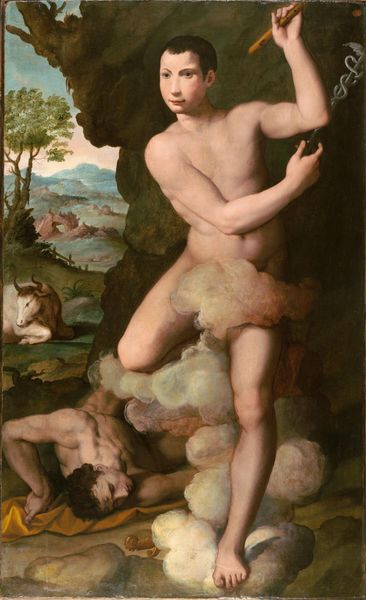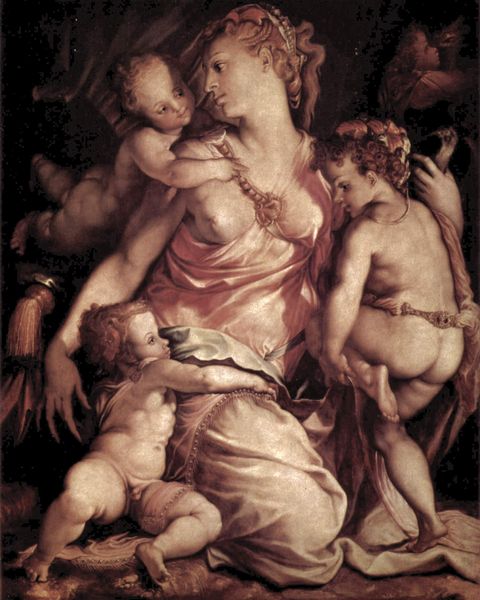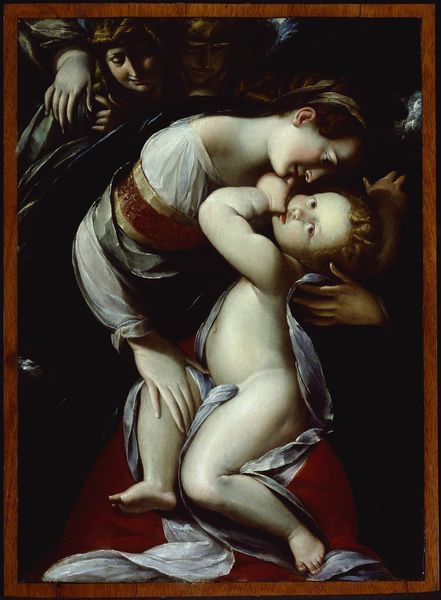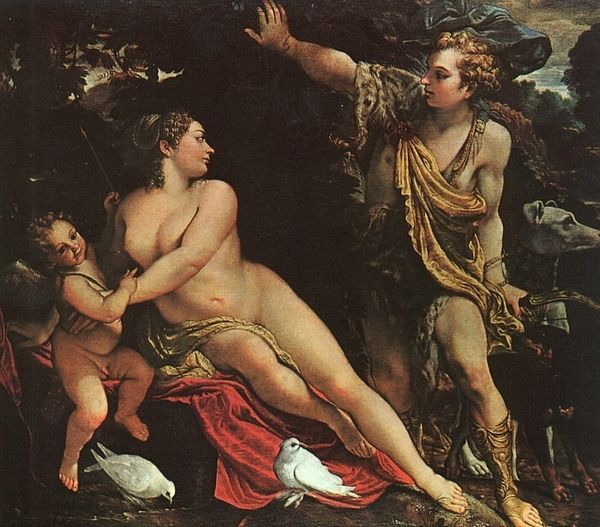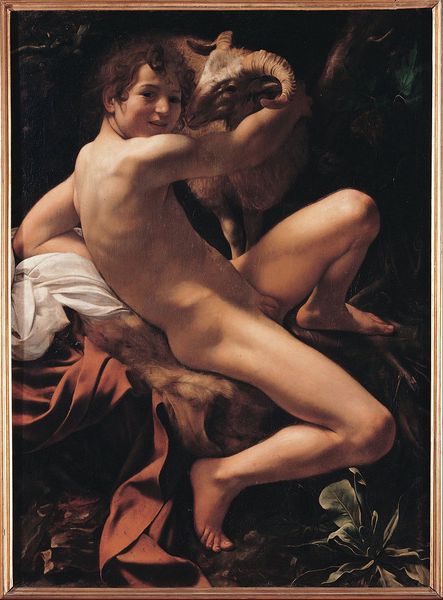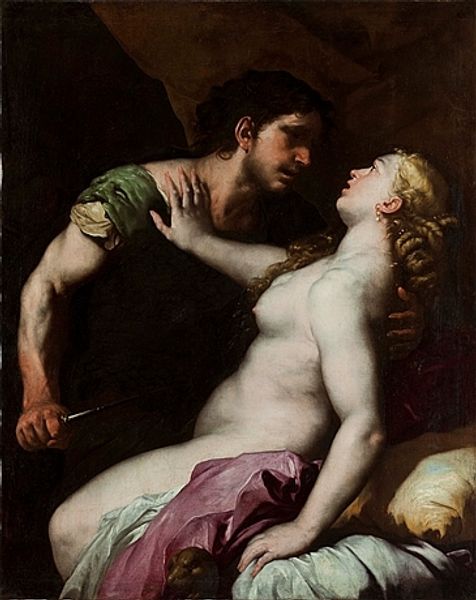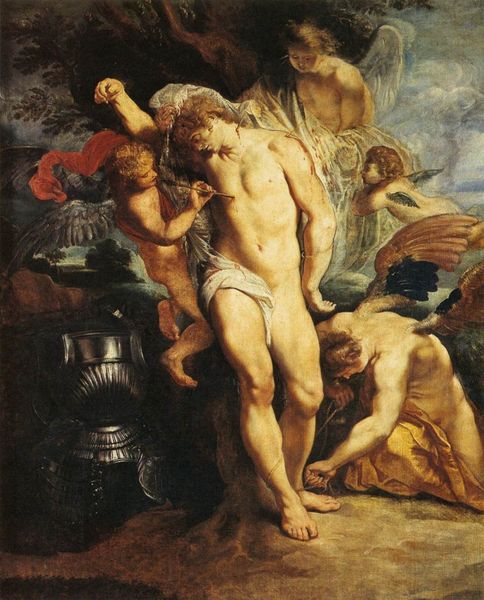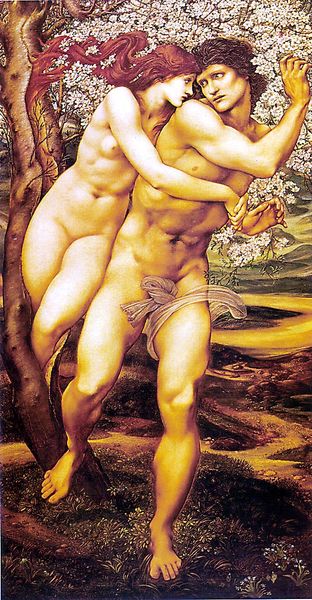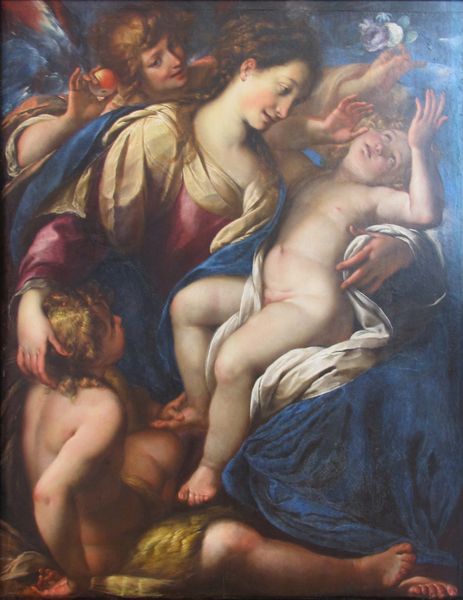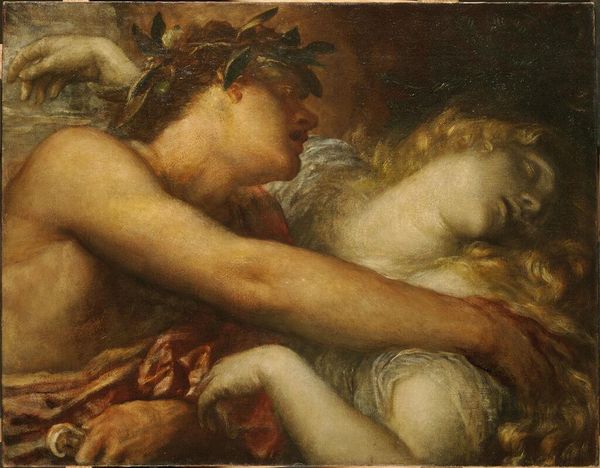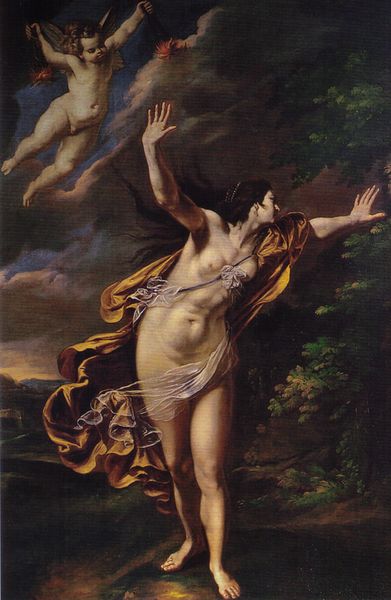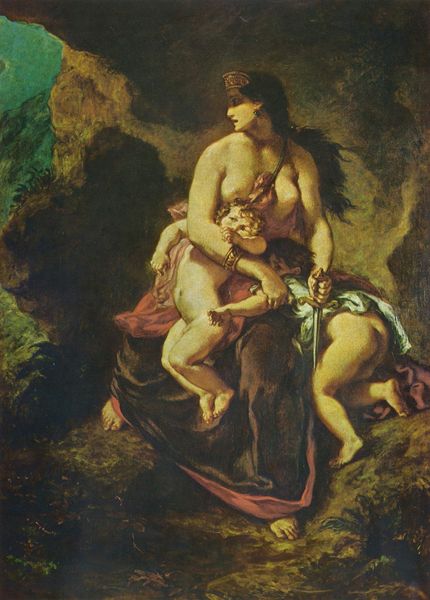
painting, oil-paint
#
allegory
#
painting
#
oil-paint
#
mannerism
#
figuration
#
oil painting
#
history-painting
#
nude
#
portrait art
Dimensions: 108 x 80 cm
Copyright: Public domain
Editor: Here we have "Angelica and Medoro," an oil on canvas created around 1600 by Bartholomeus Spranger. The figures almost seem to spill out of the frame, a tangle of limbs and drapery. What can you tell me about this composition? Curator: The Mannerist style is strongly present, showcasing a deliberate distortion and exaggeration. The anatomical forms are not realistically rendered but stylized for expressive effect. Observe the pronounced musculature of Medoro and the elongated, almost serpentine, pose of Angelica. Editor: So the artist wasn't necessarily going for realism here. Curator: Precision is subordinated to artistic license. Note the use of color: vibrant and somewhat artificial, creating a heightened sense of drama. How do the draperies function within the overall design? Editor: The folds and colors of the draping create this swirling dynamic movement throughout the canvas that feels expressive, especially with the stark contrast against the dark background. What is being emphasized in using color in this way? Curator: It draws our attention to the surface itself. Mannerism values artifice and refined style over the naturalistic. Spranger seems to be consciously flaunting his technical skill, manipulating forms and colors for purely aesthetic impact. The gazes are indirect, internal and self-aware. The meaning seems less important than the execution itself. Editor: So it is almost more about how it is painted rather than what is painted? Curator: Exactly. Spranger invites us to appreciate the work as a demonstration of artistic ingenuity rather than as a representation of external reality. By directing us to see how this image is artificially constructed rather than how it is reflecting its narrative roots, we can come to fully understand the artist’s Mannerist practice. Editor: This has offered such a new way of considering painting through form, rather than pure representation, which allows us to think differently about this piece. Curator: Indeed, this formal approach helps us understand the period in a more complex way.
Comments
No comments
Be the first to comment and join the conversation on the ultimate creative platform.
